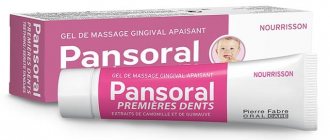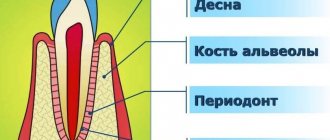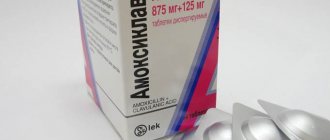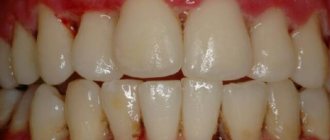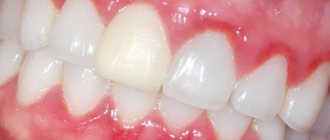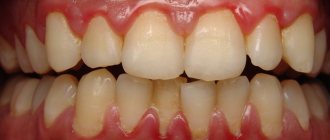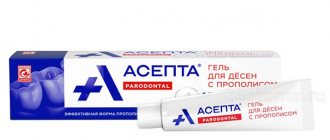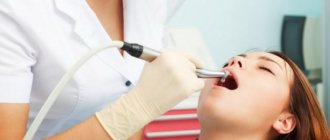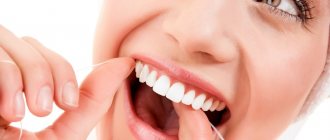Causes of periodontal disease
Most often, there are several reasons for the appearance of the disease, one of which is a violation of metabolic processes in the patient’s body. In addition, there are a number of reasons that usually go in parallel with periodontal disease:
- diseases of the gastrointestinal tract;
- hormonal imbalance, disruption of the endocrine system;
- bite pathology;
- the presence of bad habits such as smoking cigarettes and excessive alcohol consumption;
- decreased immunity;
- lack of vitamins and nutrients;
- atherosclerosis, high blood pressure;
- a history of diabetes mellitus;
- hereditary factor;
- the presence of plaque of natural origin.
Symptoms of periodontal disease
According to statistics, patients do not know about the onset of the disease, since at first it goes unnoticed. But during a dental examination, patients complain of:
- painful reaction to hot, cold, sour;
- constant bleeding gums, bloody taste throughout the day;
- swelling and soreness of the gums;
- a putrid odor from the mouth is noticed immediately after brushing;
- emerging tooth mobility.
Basic treatment methods
Correct and complete treatment for periodontal inflammation is prescribed directly by a periodontist. The treatment complexes at the initial stage of treatment include such manipulations as removing dental plaque and excess fillings, sharpening sharp tooth edges and eliminating bite defects.
To rid the oral cavity of dental deposits, dentists carry out professional cleaning using a chemical method (using acids, alkaline preparations), sonic (influencing deposits with ultrasound or sandblasting), or mechanical methods (using special periodontal hooks, probes, excavators). In addition to removing tartar, the oral cavity is simultaneously treated with one of the antiseptic solutions (hydrogen peroxide 3%, chlorhexidine bigluconate). Next, the doctor should help the patient choose basic hygiene products (toothpaste and brush, suitable hardness), mouth rinse and dental floss. As a rule, preference is given to products that have antibacterial properties and also contain herbal complexes.
If there are inflammations with purulent contents in the mouth, in this case it is appropriate to use medications containing antibiotics (most often presented in the form of gels and powders).
It is worth remembering about additional physical treatment methods, such as gum massage, leech treatment and physiotherapeutic procedures. For example, darsonvalization for periodontal disease normalizes metabolism and stops the atrophy of gingival tissue, the use of electrophoresis with calcium gluconate reduces sensitivity in the area of exposed tooth necks, and massage helps accelerate blood flow to the gums, which improves their metabolic processes.
Recommendations for gum disease
Recommendations for inflammation of the gums to follow for 14 days:
1. A new toothbrush of medium hardness, if subsequent pain occurs while brushing your teeth, change to soft bristles
2. Toothpaste based on medicinal herbs (“Forest balm”, “Lacalute active”, “Paradontax”)
3.Gum massage
4. Rinse the mouth with decoctions of medicinal herbs (chamomile, calendula) or “Rotokan” (2 drops per 1 cup of water)
5. Rinse the mouth with a solution of “Chlorhexidine” 0.02%
6. Gel for gums “Metrogil-Denta” after brushing teeth on the gums and periodontal pockets using cannulas (teach the patient or apply during appointments with a dentist)
For chronic recurrent inflammation and bleeding of the gums, additionally:
1. To strengthen blood vessels and reduce bleeding, vitamin “Aevit” is prescribed
2. Metronidazole or Trichopolum 2 times a day, 1 tablet after meals for 7 days (for gastrointestinal diseases while taking antibiotics, Linex is prescribed, 1 capsule 2 times a day;
for chronic candidiasis while taking antibiotics, “Flucostat” is prescribed, 1 capsule on the 1st day of taking the antibiotic and the last)
Physiotherapeutic treatment with the Optodan laser (prescribed in the absence of cancer or glandular diseases):
1. With 1-2 sessions, mode No. 1 for 5 minutes (anti-inflammatory effect)
2. From 3-7 sessions, mode No. 1 for 3 minutes (anti-inflammatory effect)
3. From 8-12 sessions, mode No. 2 for 3 minutes (regenerative effect)
Recommendations after periodontal surgery.
1. Before the operation, professional oral hygiene must be performed 1-2 days before the operation.
2. You must take medications before and after surgery as recommended by your doctor. When taking medications, you should not consume alcoholic beverages or other medications without the consent of your doctor.
3. After surgery, minor bleeding may be observed for 1 - 2 days; if there is severe bleeding, immediately contact your doctor.
4. Edema of varying severity is an inevitable consequence of surgical intervention; it goes away on its own starting from 3 days after surgery. To reduce the severity of swelling, it is necessary to apply ice to the cheek in the area of the operation during the first 4 - 5 hours after surgery, taking 15 - 20-minute breaks every half hour.
5. Take recommended pain relievers as needed.
6. For 3 days after surgery, it is necessary to reduce physical activity. Avoid running or high-impact activities. You are not allowed to visit the swimming pool, bathhouse or sauna.
7. In the first 7 days after surgery, to maintain hygiene, gently rinse your mouth with warm water after each meal. Three times a day you need to rinse your mouth with a disinfectant solution prescribed by your doctor, according to the instructions.
8. Avoid smoking for at least 72 hours before and after surgery, or stop smoking altogether, as smoking increases the likelihood of complications.
9. If there are stitches, they will be removed by the dentist during your follow-up visit in 7 to 14 days.
Drug treatment of periodontal disease
The most common medications for the treatment of gums are preparations containing antibiotics and propolis. Antibiotics (Metronidazole, Linkamycin, Trichopolum) in this situation kill pathogenic microflora, preventing further spread of the inflammatory process, and propolis strengthens the gums, has an antibacterial effect and reduces pain in the oral cavity. Regular intake of vitamin and mineral complexes increases not only local, but also the general immunity of the body, thereby achieving quick results in the treatment of periodontal disease. The most accessible products include: Cholisal, Elugel gels, heparin ointment, Troxevasina ointment, Solcoseryl paste for mucous membranes.
Metroxidine denta
Dosage form
Dental gel
Composition per 1 g
Active ingredients:
- Metronidazole benzoate – 16.0 mg
- Equivalent to metronidazole – 10.0 mg
- Chlorhexidine digluconate solution 20% – 2.5 mg
- Equivalent to chlorhexidine bigluconate – 0.5 mg
Excipients:
propylene glycol – 50.0 mg, carbomer-980 – 15.0 mg, disodium edetate – 0.5 mg, saccharin – 1.0 mg, levomenthol – 5.0 mg, sodium hydroxide – 4.0 g, purified water – up to 1 year
Description
Opalescent soft gel of white or almost white color with a characteristic odor.
Pharmacotherapeutic group
Antimicrobial agent.
ATX code:
A01AB11.
Pharmacological properties
Pharmacodynamics
The effectiveness of the drug is due to the presence of two antibacterial components in its composition:
1) metronidazole has an antibacterial effect against anaerobic bacteria that cause periodontal diseases: Porp h yromonas gingivalis, Pre v otella inter mellia , melaninogenicus, Selenomonns
spp.
;
2) chlorhexidine is an antiseptic and antimicrobial agent, effective against gram-positive and gram-negative aerobic and anaerobic bacteria ( Treponeta spp .
, Neisse riagonorrhoeae , Tri c homonas spp., Chlamydiia spp ., Ureaplasma spp ., Bacterotdes fragilis
).
Some strains of Pseudo mon as spp., Proteus spp. are weakly sensitive to the drug.
, and also acid-resistant forms of bacteria and bacterial spores are resistant.
Does not interfere with the functional activity of lactobacilli.
Pharmacokinetics
When applied topically, the active substances are practically not absorbed.
Indications for use
Infectious and inflammatory diseases of periodontal and oral mucosa:
- acute and chronic gingivitis;
- acute ulcerative-necrotizing gingivitis of Vincent;
- acute and chronic periodontitis;
- juvenile periodontitis;
- periodontal disease complicated by gingivitis;
- aphthous stomatitis;
- cheilitis;
- inflammation of the oral mucosa when wearing dentures;
- post-extraction alveolitis (inflammation of the socket after tooth extraction);
- periodontitis, periodontal abscess (as part of combination therapy).
Contraindications
Hypersensitivity to metronidazole, chlorhexidine, nitroimidazole derivatives, as well as to other components of the drug: diseases of the blood system, including a history; diseases of the peripheral nervous system; children under 6 years of age.
Use during pregnancy and breastfeeding
Due to the lack of clinical data, the safety of the drug during pregnancy and breastfeeding has not been established. The use of the drug during pregnancy is not recommended.
During lactation, if it is necessary to prescribe the drug, the issue of stopping breastfeeding should be decided.
Directions for use and doses
Topically, for dental use only.
For inflammation of the gums (gingivitis):
The gel is applied to the gum area 2 times a day; it is not recommended to wash off the gel. The duration of treatment is on average 7-10 days. After applying the gel, you should refrain from drinking and eating for 30 minutes.
For periodontitis:
After removing dental deposits, periodontal pockets are treated with gel and the gel is applied to the gum area. Exposure time – 30 min. The number of procedures depends on the severity of the disease. In the future, the patient can apply the gel independently: the gel is applied to the gum area 2 times a day for 7-10 days.
For aphthous stomatitis:
the drug is applied to the affected area of the oral mucosa 2 times a day for 7-10 days.
To prevent acute exacerbations of chronic gingivitis and periodontitis:
The gel is applied to the gum area 2 times a day for 7-10 days. Preventive courses of treatment are carried out 2-3 times a year.
To prevent post-extraction alveolitis:
after tooth extraction, the hole is treated with gel, then the gel is applied on an outpatient basis 2-3 times a day for 7-10 days.
If after treatment there is no relief, or symptoms worsen, or new symptoms appear, you should consult your doctor. Use the drug only according to the indications, the method of use and in the doses indicated in the instructions for use.
Side effect
When using the drug Metroxidine denta, the following may be observed: headache, allergic reactions (skin rash, itching, urticaria, anaphylactic reactions, including anaphylactic shock).
If you experience the side effects listed in the instructions, or they get worse, or you notice any other side effects not listed in the instructions, tell your doctor.
Overdose
When using the drug in accordance with the instructions for use, an overdose is unlikely. With excessive or prolonged use, dose-dependent side effects may increase.
Treatment: symptomatic therapy.
Interaction with other drugs
Not studied.
special instructions
The use of the gel does not replace hygienic brushing of teeth, therefore, during the course of treatment with the drug, teeth brushing should be continued.
If the medicine has become unusable or its expiration date has expired, do not throw it into wastewater or onto the street! Place it in a bag and place it in the trash. These measures will help protect the environment!
The effect of the drug on the ability to drive vehicles and machinery
The drug does not affect the ability to drive or engage in other potentially hazardous activities that require increased concentration and speed of psychomotor reactions.
Release form
Dental gel, 1% + 0.05%.
20, 25, 30, 35, 40, 50, 60, 70, 80, 100 g in aluminum tubes, sealed with a bouchon.
Each tube, along with instructions for medical use, is placed in a cardboard pack.
Storage conditions
At a temperature not higher than 25 °C.
Keep out of the reach of children.
Best before date
3 years.
Do not use after the expiration date.
Vacation conditions
Available without a prescription.
Surgical method of treatment
One of the most expensive, but no less effective methods of treatment is surgery. With the help of certain materials and special membranes that are planted under the gum, bone tissue growth is achieved. As a result of a productive course of treatment, it is possible to achieve the creation of an alveolar process, with the help of which it is possible to fix loose teeth. To restore gums, several types of cells are used: fibroblasts (accelerate the production of collagen, which improves tissue elasticity and increases the protective properties of the oral mucosa), stem cells (produce new mucosal tissue), and platelet growth factors (protein compounds to strengthen and restore blood vessels blood and lymph).

